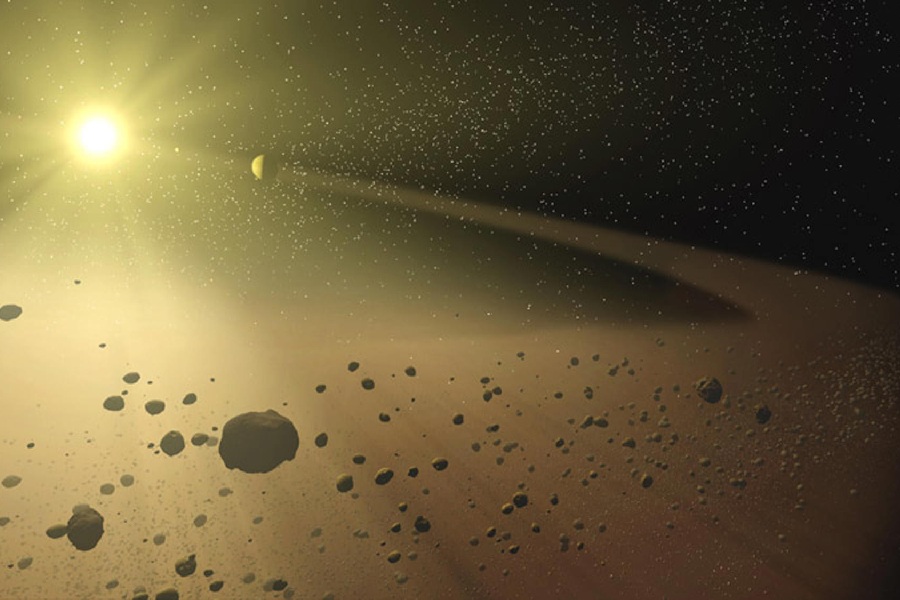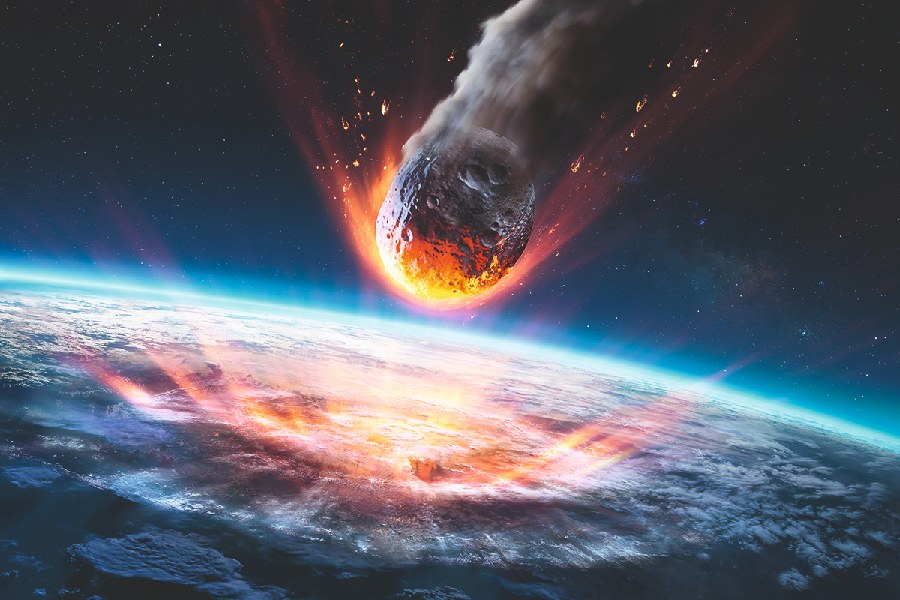The asteroid belt is a mysterious region of rock scattered between the orbits of Mars and Jupiter. It contains millions of remnant bodies of various sizes. The very existence of this belt begs an intriguing question – how did the asteroid belt form?
Figuring out where the asteroids in the belt originally came from can give us clues about how our Solar System formed long ago. Scientists have suggested many ideas for how the Asteroid Belt started, but they haven’t found clear proof for any one theory yet.
Could planetary migrations in the chaotic early epochs have swept this belt into existence? Might the belt mark remnants of an unseen proto-planet long lost to time? Or does it contain leaves from migrations of Jupiter and Saturn?
Untangling this enduring mystery has challenged astronomers to gather clues from a variety of sources near and far across the Solar System. In this synthesis of evidence, new and old, we will trace the winding journey behind prevailing theories on the asteroid belt’s emergence.
While we trace this history. The latest space missions continue to reshape our modern understanding of this formative cosmic event, tracing back over four billion years.

How Did the Asteroid Belt Form?
How did the asteroid belt form? What created the asteroid belt was leftover rocky material that didn’t clump together to form planets when the Solar System was young. About 4.6 billion years ago, small rocks and debris in the early Solar System started colliding and sticking together.
However, due to the strong gravitational pull of Jupiter, these rocks couldn’t form a single planet. Instead, they stayed in orbit between Mars and Jupiter, forming the asteroid belt.
Historical Background
Asteroids are visible as moving points of light, first reliably recorded by Giuseppe Piazzi in 1801. He named his discovery Ceres after the Roman goddess. However, Cesareo had suggested Ceres was a missing planet between Mars and Jupiter back in 1766.
Seeing evidence for this in the gap between orbital distances predicted by the Titius-Bode Law, Johann Bode popularized the work of Titius in 1766 and created a mathematical series approximating planetary orbits. This gap implied a missing planet once existed between Mars and Jupiter.
The discovery of Uranus in 1781 fit Bode’s Law pattern and seemed to confirm the missing planet idea. This spurred multiple astronomers like Piazzi to search over the next decades for these predicted missing worlds. Piazzi discovered and tracked Ceres starting on January 1, 1801.
Its orbit shape matched predictions, but the object was far smaller than a full planet. Thus, Ceres became the first classified asteroid. Famous astronomers William Herschel and Heinrich Olbers each later found additional asteroids.
Pallas and Juno were discovered in 1802 and 1804, respectively. These findings seemed to confirm the pattern of an asteroid group occupying the space between Mars and Jupiter.
Italian Astronomer Giuseppe Piazzi’s Discovery
Piazzi’s Discovery of Ceres
Piazzi first observed Ceres on January 1, 1801, detecting a moving celestial object that appeared star-like. But its movement over weeks revealed an orbit. Piazzi precisely tracked Ceres’ position over 40+ nights into February 1801, recording pivotal data from Sicily that allowed calculating its path when lost behind the Sun’s glare.
Piazzi reported his findings in letters to scientists like Bode and Lalande, sharing orbital data to aid in rediscovering dim Ceres. But its small size ruled out it being the predicted missing planet, though its orbit matched. Piazzi wavered on interpreting Ceres as a new planet.
Piazzi’s records of Ceres’ position over 40+ nights were vital in relocating Ceres and confirming its orbit between Mars and Jupiter.
Although much smaller than planets, Ceres revealed that a new population of asteroids likely existed in a belt in that region, previously unseen. The detection of Ceres fueled theories about the origins of this asteroid belt as well as further searches for asteroids.

What Can Be Found in the Asteroid Belt?
The main belt contains the majority of asteroids, estimated over two million rocky and metallic bodies. With half the mass but only 4% of the Moon’s mass spread across the expanse between Mars-Jupiter, main belt asteroids are sorted into subgroups based on properties and orbits, revealing belt formation history.
Ceres resides in the main belt but is also considered a dwarf planet since it’s spherical under gravity. Many smaller minor planets and irregular bodies also orbit here, providing clues on the belt’s origins. Some comets and centaur objects make their way into the belt, swept here by gravity over time.
Asteroids shed light on the different chemistry that existed in the early solar system four billion years ago. This ancient chemistry remains intact on asteroids but has been lost as planets evolved over time.
Some unusually large asteroids, like Kleopatra and Heracles – which are almost 120 miles long – are also found in the belt. How these asteroids grew so large is unknown, but buried ice early in their history likely helped in their growth before later loss of surface volatiles.
So, while asteroids may have had more diverse surface chemistry early on, millions and billions of years of “space weathering” stripped away those original volatile materials from their surfaces. Only the possibility of ice preserved deeper inside would remain.
Different types of asteroids – C-type and S-type
Most asteroids are separated into two types – C-type or S-type. Based on brightness and spectral differences suggesting contrasts in composition and belt origin, about 75% are dark carbon-rich C-types, while the rest are mostly brighter, rocky S-types.
C-types are carbonaceous asteroids comprising the dark, outer belt asteroids like Ceres. These asteroids have surfaces containing abundant primitive organics and hydrated minerals dating over four billion years.
The lighter S-types dominate the inner belt at just 17%, including the Eros and Vesta asteroids. They are rocky, silicate- and metal-rich fragments likely of a shattered proto-planet with brighter changed mineral surfaces from ancient water later lost.
Composition of asteroids
Most asteroids are composed of metallic, rocky materials like nickel-iron metals and anhydrous silicates, representing debris from the early solar accretion disk. Some carbon-rich asteroids also contain preserved primitive organics billion years old, revealing complex early chemistry.
Hydrated minerals found in asteroids provide evidence for ancient water alteration and processing when water was more abundant.
Asteroids contain a mix of prominent metals formed near the proto-sun combined with primitive organics detected in meteorites. Extensive hydrated phases also indicate early water chemistry processes took place.
Largest asteroid – Ceres
As mentioned above, Ceres was discovered in 1801, the first asteroid detected. Initially considered a planet, but later classified as the largest asteroid and dwarf planet. Ceres stands out with its ice, nearly spherical shape, and possible subsurface ocean and cryovolcanic plumes hinting at internal heat, unlike inert asteroids.
Ceres likely formed as a planetesimal early on before halting growth. It represents the last intact remnant protoplanet from the planet formation era starting 4.5 billion years ago around the young Sun. Thus, Ceres is a rare miniature example of that lost age, bridging asteroids and planets.
Conclusion
We have traced the winding journey behind prevailing theories explaining how the asteroid belt took form. We hope you now appreciate the incremental steps that have been made toward unraveling the origin of the asteroid belt. Space missions, celestial collisions, and advances in planetary science have all contributed pieces to decoding how did the asteroid belt form.
Moving forward, we will continue standing on the shoulders of each generation of researchers who have slowly unveiled pieces to this puzzle. These unveiled pieces have slowly assembled an intricate picture behind the formation of the asteroid belt billion of years ago.
Although our grasp of how the asteroid belt formed continues to evolve, definitive proof still awaits further asteroid exploration. This proof would come through missions directly probing asteroids, solidifying knowledge of the processes at play during the birth of worlds in our Solar System.
